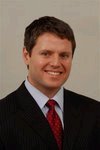Chemistry 101
One of my first professional mentors made an analogy of how running a business should be like playing around with a chemistry set, and just as fun. As he described how it was fun to tinker with mixing a little bit of a product, person, practice, etc., with a different person, product, practice, etc., the analogy started to makes sense, sink in and stick. I still think about this approach to business and in fact heard myself using these words with one of the fine folks on our team this morning as we were discussing how to overcome challenges within various aspects of our business.
While I was not an enthusiast of the subject of chemistry in school (although I did blow up a few mail boxes in my day), I sure do enjoy this approach as it applies to what we do as a business in finding new business opportunities, the creation of new ideas and identifying opportunities through a unique blend of talented people. It also makes it fun. In fact, while a group of us were in the "lab" (better known around here as the conference room) the other day, I had an epiphany which has me focusing on a neat new business opportunity for our organization simply through the blending of people and ideas.
The practice of blending people and ideas works well in the creation of new ideas or business opportunities. It can also increase excitement levels among those that you lead when you take the time to shake things up a bit through the implementation of change. There is a book about this subject that is appropriately named A Technique for Producing Ideas authored by James Webb Young. It is a small digest-sized book of only 48 pages, but what a powerful read. A member of our senior management team gave me this book at one of our meetings, and I still take it off the shelf from time to time just to get fired up again about the thought of finding new business opportunities and improved ideas for higher levels of success.
I think it is good to remind ourselves occasionally that we do not have to continually do things in exactly the same manner, especially just because that is the way things have always been done. Trying new ideas is what breathes life into an organization and brings higher levels of energy and excitement as a result. This is especially true when the idea bubbles up in the organization verses being pushed down. Our 55 field offices are a great resource for new ideas and positive opportunities for change. I like to look for opportunities to change things. This is especially true when there is no history of change in an area of the business that has grown stagnate or when there is an opportunity to create new dynamic relationships within our organization.
Have you tinkered with your chemistry set lately? If so, what did you do and what were the results?


